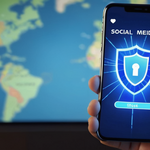
The short answer is that Internet Service Providers cannot see your actual browsing history when you use a properly functioning Virtual Private Network, but the complete picture is significantly more nuanced and requires careful examination of what ISPs can detect, how VPNs function, what vulnerabilities exist, and what legal frameworks govern this complex intersection of technology and privacy. This comprehensive analysis explores the multifaceted relationship between VPNs and ISP surveillance, examining not only the technical capabilities of these technologies but also their limitations, the role of VPN providers themselves as potential privacy concerns, and the broader context of government surveillance that affects all internet users regardless of their privacy measures.
Understanding Internet Service Provider Capabilities Without VPN Protection
Internet Service Providers occupy a uniquely powerful position in the digital ecosystem as the fundamental gatekeepers between individual users and the broader internet infrastructure. Every packet of data that leaves a user’s device must pass through their ISP’s network infrastructure before reaching its destination, which creates an inherent technical capability for surveillance that goes far beyond what most users realize. When operating without VPN protection, ISPs can observe an extensive and detailed picture of user behavior that rivals or exceeds what many commercial tracking entities can collect.
The scope of what ISPs can see encompasses the websites you visit, including the domain names and potentially the specific URLs and page content if those sites use unencrypted HTTP connections rather than the more secure HTTPS protocol. ISPs can monitor how much time you spend on each website, which applications you use, and detailed patterns of your bandwidth consumption that can reveal what services you’re accessing even without seeing the specific content. Your Internet Protocol address, which reveals your physical location and device identity, remains visible to your ISP at all times since they are the entity that assigns and manages these addresses. Additionally, ISPs can see metadata about your connection including the duration and frequency of your visits to various services, and increasingly sophisticated monitoring tools allow ISPs to perform detailed traffic analysis that can infer your activities even without seeing the encrypted content.
The motivations for ISPs to engage in this surveillance are multifaceted and largely economic in nature. ISPs have discovered that user browsing data represents a valuable commodity that can be monetized through various means. Many ISPs compile anonymous browsing logs and sell them to marketing companies, advertisers, and data brokers who use this information for targeted advertising and consumer profiling. Some ISPs have begun implementing business models where privacy itself becomes a premium service, requiring users to pay additional monthly fees to prevent their browsing data from being collected and sold. Beyond these commercial motivations, ISPs are often legally obligated to retain certain records of user activity and may be required by law enforcement to provide this information upon request or through subpoena.
The regulatory landscape around ISP data collection varies significantly by jurisdiction, with some regions implementing strong protections while others have essentially mandated surveillance. In the United Kingdom, the Investigatory Powers Act requires web and phone companies to store users’ browsing histories for twelve months, effectively making ISPs mandatory tools of state surveillance. Globally, mandatory data retention regimes have been implemented in numerous countries, requiring ISPs to continuously collect and store records of their customers’ online activities. Even in jurisdictions without explicit mandatory logging requirements like the United States, government agencies have developed sophisticated mechanisms to compel private companies including ISPs to provide user data through legal instruments such as national security letters, often accompanied by gag orders that prevent companies from disclosing these requests to their users.
The Technical Mechanisms of VPN Encryption and Data Concealment
Virtual Private Networks represent a fundamentally different architectural approach to internet connectivity that interposes an additional layer of encryption and routing between the user’s device and the destination websites they visit. To understand how VPNs conceal browsing history from ISPs, it is essential to grasp the technical transformation that occurs when a user connects to a VPN service. When you browse the internet without a VPN, your internet traffic passes through multiple checkpoints where it can be observed: it leaves your computer, passes through your home router, flows through your ISP’s network infrastructure, and only then reaches the destination website, with each checkpoint having the technical ability to view the traffic content.
When you activate a VPN connection, this flow is fundamentally altered through the application of encryption and re-routing. The VPN client software on your device encrypts all of your internet traffic before it ever leaves your computer, transforming readable data into scrambled ciphertext that cannot be deciphered without the appropriate decryption keys. This encrypted traffic then passes through your router and your ISP’s network infrastructure, but because it is now encrypted, neither of these intermediaries can read its contents or determine what websites you are visiting or what data you are transmitting. Instead of your traffic going directly to destination websites, the encrypted data is routed to a VPN server operated by your VPN service provider, which then decrypts the traffic and forwards it to the actual destination website on your behalf, making it appear to that website that the traffic originated from the VPN server’s IP address rather than your own.
This architectural change produces several important consequences for ISP visibility into user activity. Most fundamentally, ISPs can no longer see which websites you visit because your traffic is hidden within encrypted VPN tunnels. The specific web pages you browse and the content you interact with remain completely concealed from ISP inspection. Your search queries, which would normally be visible to ISPs, are now encrypted within the VPN tunnel and inaccessible to ISP monitoring. The files you download or upload to websites that do not use encryption are now protected from ISP observation because they travel through the encrypted VPN tunnel. Any information you type on websites, including personal data, login credentials, or sensitive information, remains hidden from ISPs through VPN encryption. Your actual browsing history becomes invisible to ISPs because they cannot see which sites you connect to after the traffic enters the VPN tunnel.
The encryption protocols and ciphers used in modern VPNs represent military-grade cryptographic standards that have proven resistant to attacks by well-resourced adversaries. Most quality VPNs employ either the Advanced Encryption Standard (AES) with 256-bit keys, the ChaCha20 cipher, or similar cryptographic algorithms that are considered extremely difficult to break through brute force attacks or mathematical compromise. The specific encryption strength and protocols vary depending on the VPN service and the VPN protocol being used, with protocols like WireGuard offering streamlined modern encryption, OpenVPN providing highly configurable and proven encryption standards, and IKEv2/IPSec offering robust encryption with multiple algorithm options.
An important distinction exists between the domain-level encryption that VPNs provide and the content-level encryption provided by HTTPS websites. While VPNs encrypt traffic at the network layer and hide which websites you visit, most modern websites also implement HTTPS encryption that protects the content of your interactions with those websites. This means that even if a VPN provider or someone who could observe your traffic wanted to see what you do on specific websites, they could not read the actual content of your interactions because HTTPS provides an additional layer of encryption. This combination of VPN-level encryption that hides which websites you visit combined with HTTPS-level encryption that hides what you do on those websites creates a two-layer encryption system that provides robust protection for user privacy.
What Internet Service Providers Can Still Observe Despite VPN Usage
Despite the substantial privacy protection that VPNs provide, Internet Service Providers retain the ability to observe certain metadata about user activity even when VPNs are in use, creating a surveillance avenue that is more limited than without VPNs but nevertheless provides ISPs with useful information about user behavior and enables potential secondary surveillance methods.
The most obvious and most consistently observable piece of information that ISPs can detect when users employ VPNs is the mere fact that a VPN is being used at all. ISPs can identify VPN usage through several technical mechanisms: they observe traffic flowing to IP addresses that belong to known VPN service providers, they recognize characteristic patterns in encrypted traffic that are associated with VPN protocols, and they may identify specific VPN services through their unique server IP addresses which are often publicly listed and cross-referenced in VPN server databases. This VPN detection capability is increasingly sophisticated, with some ISPs deploying advanced technologies that can identify VPN connections even when users employ obfuscation techniques or connect through standard ports like port 443 that are normally used for regular HTTPS web traffic.
ISPs can observe the IP address of the VPN server that you are connected to, which often allows them to identify which VPN service provider you are using. If you connect to NordVPN, Surfshark, ProtonVPN, or another named VPN service, ISPs can typically identify your VPN provider through the server IP address alone. This information is not sensitive in itself, but it provides ISPs with evidence of your privacy concerns and potentially enables them to infer that you are engaged in activities you wish to keep private, even though they cannot observe those activities directly.
ISPs can observe the volume of data you transfer to and from the VPN server, and the timing of your data transfers, which provides metadata that can sometimes be used to infer your activities through traffic analysis techniques. If someone transfers a large volume of data consistent with streaming video, ISPs can infer that you are likely engaged in streaming activities even though they cannot see which streaming service you are using or what specific content you are watching. Similarly, the pattern of your connections—whether you maintain a continuous connection or connect and disconnect frequently, and the specific times when you use your VPN connection—can sometimes reveal behavioral patterns that might be useful for surveillance purposes, though this information is substantially less revealing than specific browsing history.
ISPs observe the duration of your VPN connection and when you connect and disconnect, giving them a record of your general internet usage patterns. If you consistently connect to your VPN at specific times of day or maintain constant VPN connectivity, ISPs develop a pattern that reflects your internet usage habits. While this information does not directly reveal the content of your online activities, it contributes to a profile of your general behavior that might be used for marketing purposes or for identifying times when you are online.
ISPs can identify the VPN protocol being used through traffic pattern analysis and port monitoring, and can recognize specific VPN protocols like OpenVPN, WireGuard, IKEv2, or others based on characteristic traffic signatures. This is important because some VPN protocols are easier to detect and block than others, and ISPs may use this information to potentially throttle or block specific protocols if they choose to impose restrictions on VPN usage.
The timing and frequency of your connections provide another data point that ISPs can observe. For example, if you consistently connect to your VPN at specific hours and maintain consistent bandwidth usage patterns, ISPs may be able to identify you based on these behavioral patterns even without seeing the content of your traffic. While this information alone does not reveal your browsing history, it can sometimes be used in combination with other information to identify individual users or to develop profiles of behavior patterns.
Importantly, ISPs can observe if you are not using a VPN and consequently can see your regular browsing history during those times. If you use a VPN intermittently rather than continuously, ISPs can observe your unencrypted browsing history whenever your VPN is not active. This creates a practical limitation to VPN privacy protection: the protection is only effective when the VPN is actively connected, and any internet activity conducted outside of the VPN remains visible to ISPs exactly as if you were not using a VPN at all.

Advanced Detection Technologies and Deep Packet Inspection Capabilities
Beyond simple observation of traffic patterns and VPN server identification, ISPs and other network monitors increasingly deploy sophisticated technologies known as Deep Packet Inspection (DPI) that enable more advanced detection and potentially surveillance capabilities. Deep Packet Inspection represents a qualitatively different category of network monitoring compared to traditional packet analysis because it examines the complete contents of data packets, not merely the routing information, and can thereby identify characteristics of encrypted traffic that reveal what protocols and services are being used even when the specific data content remains encrypted.
Deep Packet Inspection employs multiple techniques to identify and characterize network traffic, including signature-based detection that compares packets against databases of known traffic patterns, anomaly-based detection that identifies traffic that deviates from normal patterns, protocol analysis that examines the structure and format of packets to identify which protocol is in use, and behavioral analysis that examines traffic patterns over time to identify unusual activity or usage patterns that might indicate VPN usage. DPI technology can examine unusual packet sizes that may indicate the use of a VPN, can analyze the structure and format of packets to identify VPN protocols like OpenVPN, IKEv2, or others, and can observe behavioral patterns over time that may indicate VPN usage even when the traffic itself is encrypted.
Repressive governments around the world have increasingly deployed DPI technology specifically to detect and block VPN usage as part of internet censorship regimes. China, Russia, Iran, Egypt, and other countries with restricted internet policies have developed sophisticated DPI capabilities designed to identify VPN traffic and either block it entirely or throttle connections that appear to be using VPNs, creating an ongoing technological arms race between governments seeking to enforce internet censorship and users seeking to circumvent those restrictions. This arms race has driven the development of increasingly sophisticated VPN obfuscation technologies designed to make VPN traffic appear as normal HTTPS web traffic or other legitimate network connections that are less likely to be identified and blocked by DPI systems.
While most commercial ISPs in developed democracies do not employ DPI specifically to censor or block VPN usage, they have the technical capability to do so if they choose, and some may employ DPI for traffic shaping, network management, or to identify and potentially throttle specific types of traffic. The potential for ISPs to deploy DPI represents an important caveat to the statement that ISPs cannot see your browsing history with a VPN: while properly configured VPNs with strong encryption should remain resistant to DPI analysis, the theoretical possibility exists that sufficiently sophisticated DPI analysis combined with traffic correlation attacks could potentially compromise VPN privacy under certain circumstances, particularly if the VPN provider itself is known or can be identified through metadata analysis.
Vulnerability Categories: DNS Leaks, WebRTC Leaks, and IPv6 Exposures
Despite the encryption and routing protections that VPNs provide, several categories of technical vulnerabilities can cause user information to leak out of the VPN tunnel and expose real IP addresses or browsing activity directly to ISPs, defeating the privacy protection that the VPN is intended to provide. These leak vulnerabilities represent one of the most significant practical threats to VPN privacy in the real world, and they occur not because of weaknesses in the VPN encryption itself but because other parts of the internet communication system bypass the VPN tunnel under certain circumstances.
DNS (Domain Name System) leaks represent perhaps the most common and most significant category of VPN vulnerability that can expose user browsing history to ISPs despite active VPN usage. DNS queries, which translate human-readable website addresses like “google.com” into numerical IP addresses that computers use to locate servers on the internet, normally route through your ISP’s DNS servers when you are not using a VPN. When you connect to a VPN, these DNS queries should be encrypted and routed through the VPN provider’s DNS servers instead of your ISP’s servers, but misconfigurations in VPN clients or operating systems can cause DNS queries to leak out of the VPN tunnel and be sent directly to your ISP’s DNS servers in unencrypted form. When a DNS leak occurs, your ISP can see exactly which websites you are trying to access—the DNS requests that translate website names into IP addresses—thereby completely defeating the VPN’s purpose of hiding your browsing activity from ISPs.
The causes of DNS leaks are varied and can include configuration errors in VPN clients or operating systems where DNS settings are not properly configured to use the VPN provider’s DNS servers, software errors or bugs in VPN client software that fail to properly route all DNS queries through the VPN tunnel, IPv6-based DNS leaks that occur when an operating system prefers to use IPv6 protocol and sends DNS requests through IPv6 paths that bypass the VPN tunnel even though the VPN only supports IPv4, and Windows-specific issues where the system process svchost.exe sends DNS queries without respecting the VPN routing configuration and instead routing those queries directly to the ISP’s DNS servers. Users can check for DNS leaks using freely available online tools that test whether DNS requests are leaking to the ISP’s DNS servers or being properly routed through the VPN provider, and quality VPN services include DNS leak protection and testing tools to help users identify and prevent these vulnerabilities.
WebRTC (Web Real-Time Communication) leaks represent another significant vulnerability through which VPN users can have their real IP addresses exposed to websites and network monitors despite active VPN usage. WebRTC is a browser feature that enables peer-to-peer communication for voice calls, video chats, and file sharing, and as part of its normal operation, WebRTC implements STUN (Session Traversal Utilities for NAT) mechanisms that discover the public IP address of the device in order to facilitate direct connections between peers. However, WebRTC is designed to operate independently of the browser’s proxy or VPN settings, and in many cases, WebRTC sends traffic directly to destination servers rather than routing it through the VPN tunnel, causing the device’s real IP address to be exposed to any website that implements WebRTC functionality or to any network observer monitoring WebRTC traffic.
WebRTC leaks are particularly problematic because they expose not just the fact that you are using a VPN but also your actual real IP address, which directly reveals your location and device identity to ISPs and other observers. A user might believe their VPN is protecting their anonymity while an ISP simultaneously observes WebRTC leaks that expose their real IP address and connection patterns, thereby defeating much of the privacy benefit of the VPN. Preventing WebRTC leaks requires either disabling WebRTC functionality entirely at the operating system or browser level, using VPN services that specifically implement protections against WebRTC leaks by routing WebRTC traffic through the encrypted VPN tunnel, or using privacy-focused browsers like Brave that include built-in WebRTC leak protection.
IPv6 leaks represent another technical vulnerability where devices with IPv6 connectivity can leak their real IPv6 address or browsing activity through IPv6 paths even though their IPv4 traffic is being routed through a VPN that does not support IPv6. As internet infrastructure increasingly transitions to IPv6, this vulnerability affects a growing proportion of internet users, particularly on mobile devices and in regions with more advanced IPv6 adoption. Many VPN services do not fully support IPv6, and in cases where a device has both IPv4 and IPv6 connectivity, the operating system may prefer IPv6 and route traffic through non-VPN IPv6 paths, thereby exposing the user’s activity and real IP address despite VPN usage. Users with IPv6-capable devices and network connections should verify that their VPN service properly handles and encrypts IPv6 traffic, or alternatively should disable IPv6 on their devices to prevent IPv6-based leaks.
The VPN Provider as a Privacy Consideration: What VPN Services Can See
A critical but frequently overlooked aspect of VPN privacy is that while VPNs effectively hide user browsing history from ISPs, they simultaneously transfer the ability to observe that browsing history to the VPN service provider itself. When you route all of your internet traffic through a VPN server, that server is positioned identically to how an ISP would be positioned without the VPN—it can observe the same categories of information about your online activities including which websites you visit, which applications you use, the volume of data you transfer, and the timing of your connections. Understanding what VPN providers can theoretically observe is essential for understanding the complete privacy picture of VPN usage.
In theory, a VPN provider can see your real IP address, the IP addresses of all the websites you visit, the DNS queries for the website names you are accessing, and unencrypted traffic passing through their servers. However, in practice, the observability is substantially limited by HTTPS encryption that protects the content of your website interactions. The VPN server can see that you visited a particular domain like “google.com” or “facebook.com,” but HTTPS encryption prevents the VPN provider from seeing the specific pages you visited within those sites or the content of your interactions. For example, if you visit Google.com through a VPN, the VPN provider knows you visited Google but cannot see what you searched for if you used the HTTPS-protected Google search interface.
This fundamental difference between what a VPN provider can theoretically observe and what they can actually read highlights the importance of checking whether the websites you visit use HTTPS encryption (indicated by a padlock symbol in the address bar and “https://” in the URL). HTTPS protects the content of your interactions even from your VPN provider, ISP, or any network monitor that can observe your traffic at the network level, but unencrypted HTTP websites (increasingly rare but still present on some older or poorly maintained sites) would expose their full content to VPN providers, ISPs, and any other network observer capable of capturing the traffic.
The crucial question for VPN privacy is not what VPN providers can theoretically see, but rather what they actually log and retain. VPN services typically maintain one of several logging policies: no-logs policies that claim not to maintain any records of user browsing activity; minimal-logs policies that maintain only minimal metadata necessary for billing or account management; or full-logging policies that maintain comprehensive records of user activity. Quality VPN services that specifically market themselves for privacy purposes generally maintain strict no-logs policies and do not keep records of websites visited, domain names accessed, or IP addresses of destination servers, though they typically do maintain minimal information necessary for billing and account management such as customer name, email address, and payment information.
However, the reliability of VPN no-logs claims remains contested and uncertain for several reasons. Many VPN services are legally registered in jurisdictions with lenient privacy laws or no mandatory logging requirements, but their actual physical offices, employees, and operations are located in countries with much stricter data retention and government surveillance laws, creating uncertainty about whether the favorable jurisdiction provides meaningful protection. VPN services in the United States, while facing no explicit mandatory logging requirements in law, are subject to national security letters from the U.S. government that can compel the VPN provider to begin logging specific users’ activity and to turn over that data to law enforcement or intelligence agencies, and these national security letters are typically accompanied by gag orders that prevent the VPN company from disclosing that the government has demanded user data. Courts in virtually all countries except Switzerland can issue orders requiring VPN providers to begin logging the activity of named individuals, meaning that even services with strong no-logs policies cannot guarantee that they will not maintain logs of future activity if a court orders them to do so.
These considerations mean that VPN users must place substantial trust in their VPN provider, and that trust should be grounded in verifiable facts about the provider’s logging policies, their jurisdiction of operation, independent security audits of their systems, and historical transparency reports that document government requests for user data. VPN providers that maintain transparency reports documenting the number and nature of government data requests they receive provide at least some accountability and evidence that they are not universally complying with government surveillance demands.

Government Surveillance, Legal Authority, and VPN Limitations
The broader context of government surveillance significantly shapes the practical privacy benefits that VPNs can provide, creating a layer of complexity that extends beyond the technical question of ISP surveillance. Government agencies worldwide have developed legal mechanisms and technological capabilities to conduct mass surveillance that can compromise VPN privacy at multiple points in the system, and understanding these surveillance mechanisms is essential to understanding the complete privacy picture.
In the United States, Section 702 of the Foreign Intelligence Surveillance Act authorizes the National Security Agency to conduct mass, warrantless surveillance of Americans’ international communications through two primary mechanisms known as PRISM and Upstream. The PRISM program involves the NSA obtaining communications directly from U.S. technology companies like Facebook, Google, Apple, and Microsoft, while the Upstream program involves the NSA intercepting and copying Americans’ international internet communications in bulk as they flow into and out of the United States through undersea cables and other infrastructure chokepoints. Although Section 702 does not technically allow the NSA to target Americans initially, vast quantities of Americans’ communications are searched and stored in government databases, and law enforcement agencies including the FBI routinely exploit these databases to conduct warrantless searches of Americans’ communications for use in domestic investigations.
While VPNs can provide protection against ISP surveillance, they generally cannot protect against these upstream government surveillance programs because the government is intercepting traffic at internet infrastructure chokepoints before it even reaches user devices or enters VPN tunnels, or is obtaining communications directly from technology companies rather than intercepting them from networks. Even if your traffic is encrypted with a VPN, government agencies that can intercept traffic at physical infrastructure level or compel technology companies to provide communications can still access information about your internet activities.
Additionally, governments worldwide increasingly require ISPs and VPN providers to maintain logs of user activity through mandatory data retention laws, giving law enforcement and intelligence agencies access to records of user internet activity even if the content of that activity is encrypted. In the United Kingdom, the Investigatory Powers Act requires telecommunications providers to store records of users’ browsing history for twelve months. In many other countries, similar mandatory data retention regimes have been implemented, requiring telecommunications providers and increasingly VPN services to maintain logs of user activity that can be subpoenaed by law enforcement.
These government surveillance capabilities and legal frameworks mean that VPN protection is effective against ISP surveillance and commercial data collection, but should not be understood as providing protection against targeted government surveillance of specific individuals, and may provide only limited protection against mass surveillance programs. Users in countries with restrictive government surveillance regimes or who are concerned about being specifically targeted by law enforcement should understand that VPNs are a necessary but not sufficient privacy tool, and should consider additional privacy measures like using the Tor network for additional anonymization, using encrypted messaging applications for communications, and carefully considering what personal information they share online.
Practical Recommendations and Best Practices for VPN Privacy
Given the complex landscape of ISP surveillance capabilities, VPN protections, VPN vulnerabilities, and government surveillance mechanisms, users seeking to protect their browsing history from ISP surveillance should implement several layers of protection and best practices. Using a VPN is a necessary first step for hiding browsing history from ISPs, but should be complemented by additional technical measures and careful attention to VPN configuration and selection.
Users should select VPN services from providers that maintain verified no-logs policies, ideally backed by independent security audits that confirm the absence of logging infrastructure. VPN providers based in jurisdictions with strong privacy laws and no mandatory logging requirements provide somewhat greater assurance than providers in countries with weaker privacy protections, though no jurisdiction provides absolute immunity from government demands. Users should review the VPN provider’s transparency reports documenting government data requests to understand how frequently they are receiving requests and whether they are complying with them.
VPN services should include important security features like kill switch functionality that blocks all internet traffic if the VPN connection drops, preventing data leaks when VPN connections temporarily fail. DNS leak protection ensures that DNS queries are routed through the VPN provider’s servers rather than leaking to the ISP’s DNS servers. WebRTC leak protection prevents the VPN from leaking real IP addresses through WebRTC channels. Split tunneling, while sometimes useful for performance purposes, creates security risks by allowing some traffic to bypass the VPN and should be used carefully if at all, and when used should route only genuinely non-sensitive traffic outside the VPN tunnel.
Users should ensure that their VPN is configured to use secure protocols like WireGuard or OpenVPN rather than older, less secure protocols like PPTP or L2TP/IPSec. Modern VPN protocols like WireGuard provide strong encryption, good performance, and resistance to detection by advanced network analysis techniques. VPN connections should use strong encryption standards like AES-256 or ChaCha20, and should support perfect forward secrecy where possible to ensure that even if encryption keys are compromised, past communications remain encrypted.
Beyond VPN configuration, users should verify that their VPN connection is actually working properly by performing DNS leak tests and WebRTC leak tests using online tools, ensuring that their real IP address is not being exposed and that DNS requests are not leaking to their ISP. Users should maintain their VPN connection continuously if they want to protect their browsing history, because any internet activity conducted outside of the VPN remains visible to ISPs exactly as if they were not using a VPN.
Users should understand the difference between VPN protection and complete anonymity, and should recognize that VPN protection primarily protects against ISP surveillance and commercial tracking, but provides limited protection against targeted government surveillance and no protection against government mass surveillance programs. For additional anonymity beyond VPN protection, users concerned about targeted surveillance can consider using the Tor network, which routes connections through multiple volunteer-operated nodes making them extremely difficult to trace, though Tor provides lower performance than VPNs and involves different trade-offs and potential vulnerabilities.
Users should also employ additional privacy measures beyond VPN usage, including using HTTPS-only mode in their browsers to ensure that unencrypted HTTP traffic is avoided, using privacy-focused search engines like DuckDuckGo instead of Google to avoid search history being tied to their IP address or user account, clearing browser cookies and tracking data regularly or using private browsing modes, and being cautious about the information they voluntarily share online including in web forms, on social media, and through online accounts.
The Evolving Technological Arms Race: VPN Obfuscation and Detection
The relationship between VPN technology and surveillance capabilities should be understood as an ongoing technological arms race between those seeking to enforce internet censorship or conduct surveillance and those seeking to circumvent those restrictions and maintain privacy. This arms race has driven the development of increasingly sophisticated VPN obfuscation technologies designed to make VPN traffic indistinguishable from legitimate network traffic, while simultaneously driving the development of increasingly sophisticated detection methods capable of identifying VPNs despite obfuscation efforts.
Obfuscation techniques represent the cutting edge of VPN technology for circumventing advanced DPI detection and government censorship. VPN services in countries with restrictive internet policies have developed protocols like Stealth VPN that use obfuscated TLS tunneling over TCP to make VPN traffic appear as normal HTTPS web traffic rather than VPN traffic, making it extremely difficult for censorship infrastructure to distinguish between legitimate web browsing and VPN usage. These obfuscation techniques change the traffic patterns and signatures that DPI systems typically use to identify VPNs, forcing censors to develop new and more sophisticated detection methods.
However, advanced nation-state adversaries and increasingly sophisticated commercial DPI vendors continue to develop detection methods that can identify VPN traffic despite obfuscation efforts, creating a continuing back-and-forth cycle where obfuscation techniques are developed, then broken or circumvented, then upgraded again. The sophistication of this arms race reflects the fact that VPN detection and blocking is fundamentally difficult from a technical perspective if the entity conducting the blocking does not have the ability to comprehensively monitor and control all internet infrastructure, but becomes increasingly feasible as surveillance and censorship infrastructure becomes more sophisticated.
This technological arms race has important practical implications for VPN users: obfuscation features that are cutting-edge and effective today may become obsolete tomorrow as adversaries develop new detection methods, meaning that users cannot rely permanently on any single VPN obfuscation technique to evade detection in highly restrictive environments. VPN providers in countries with sophisticated censorship infrastructure like China and Russia must continuously update their obfuscation techniques to maintain effectiveness, and users in these environments must stay informed about which VPN services remain functional as others are blocked or detected.
Your Browsing History: A VPN’s Promise of Privacy
The answer to the question of whether Internet Service Providers can see your browsing history when you use a VPN is a qualified “no”—ISPs cannot see your actual browsing history with a properly functioning VPN, but the complete reality is significantly more nuanced than this simple answer suggests. VPNs successfully encrypt and conceal user browsing history from ISP surveillance through the application of encryption and re-routing of internet traffic through remote VPN servers, preventing ISPs from observing which websites you visit, what you do on those websites, or what data you transmit online. This represents a substantial and meaningful privacy improvement over browsing the internet without a VPN, where ISPs can observe all of these activities in detail.
However, this privacy protection comes with important caveats and limitations that users should understand. ISPs can still observe that you are using a VPN, can potentially identify which VPN service you are using based on the server IP address, and can observe metadata about your connections including the volume of data transferred, the timing of connections, and general bandwidth usage patterns. Technical vulnerabilities including DNS leaks, WebRTC leaks, and IPv6 leaks can defeat VPN protection if not properly configured and monitored. The VPN provider itself gains the ability to observe your browsing history that you are protecting from your ISP, creating a new privacy concern that requires careful selection of trustworthy VPN providers with verified no-logs policies.
The broader context of government surveillance, mandatory data retention laws, and legal mechanisms that compel VPN providers to log user activity means that while VPNs provide protection against ISP surveillance and commercial data collection, they provide limited protection against targeted government surveillance and no protection against mass surveillance programs. Users seeking comprehensive privacy protection must employ multiple layers of protection including VPNs, HTTPS-only browsing, encrypted communication platforms, and in some cases additional anonymization technologies like Tor.
The technological landscape of VPN protection remains dynamic, with ongoing arms races between censorship and surveillance technologies on one side and VPN obfuscation techniques on the other. Users who depend on VPN protection should understand that this protection is effective but not absolute, and should stay informed about VPN developments, security vulnerabilities, and best practices as the technological landscape evolves. For most users in developed democracies seeking to protect their browsing history from ISP commercial surveillance and tracking, a quality VPN with strong encryption, verified no-logs policies, and proper configuration provides highly effective protection. For users in more restrictive surveillance environments or seeking protection against targeted government surveillance, VPNs remain a necessary tool but should be understood as one component of a broader privacy and security strategy rather than a complete solution to the complex and multifaceted landscape of modern digital surveillance.
Protect Your Digital Life with Activate Security
Get 14 powerful security tools in one comprehensive suite. VPN, antivirus, password manager, dark web monitoring, and more.
Get Protected Now





